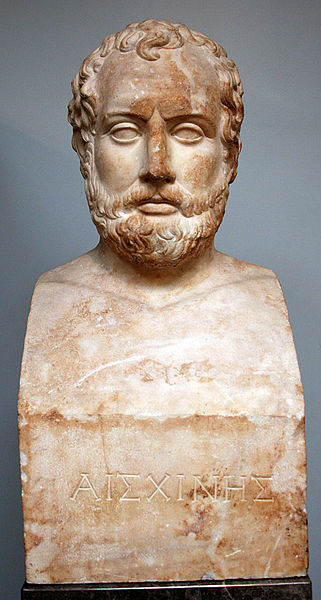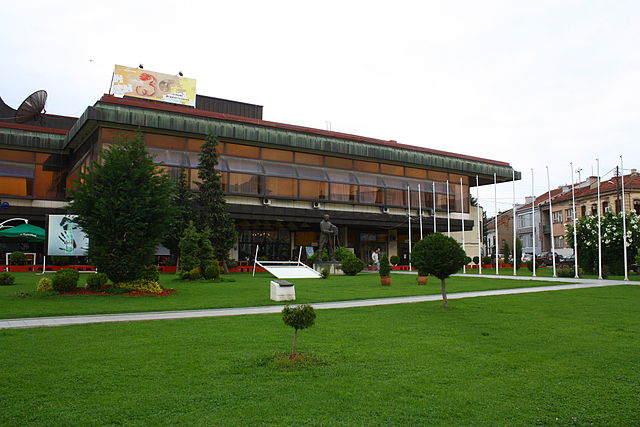Heraclea Lyncestis, also transliterated Herakleia Lynkestis, was an ancient Greek city in Macedon, ruled later by the Romans. Its ruins are situated 2 km (1.2 mi) south of the present-day town of Bitola, North Macedonia. In the early Christian period, Heraclea was an important Episcopal seat and a waypoint on the Via Egnatia that once linked Byzantium with Rome through the Adriatic seaport of Dyrrachium. Some of its bishops are mentioned in synods in Serdica and other nearby towns. The city was gradually abandoned in the 6th century AD following an earthquake and Slavic invasions.
The Byzantine "small basilica" at Heraclea Lyncestis
Heraclea Lycestis on the Via Egnatia.
Marble bust of Aeschines from Heraclea Lyncestis dating from the Roman period (120-130 AD), donated to the British Museum by the English explorer William Martin Leake
Great Basilica, narthex mosaic - detail
Bitola is a city in the southwestern part of North Macedonia. It is located in the southern part of the Pelagonia valley, surrounded by the Baba, Nidže, and Kajmakčalan mountain ranges, 14 kilometres north of the Medžitlija-Níki border crossing with Greece. The city stands at an important junction connecting the south of the Adriatic Sea region with the Aegean Sea and Central Europe, and it is an administrative, cultural, industrial, commercial, and educational centre. It has been known since the Ottoman period as the "City of Consuls", since many European countries had consulates in Bitola.
Image: Ambientalna ulica Marsal Tito Bitola (10)
Image: Bitola 019
Image: Седиште на Преспанско пелагониската православна епархија се наоѓа во градот Битола
Image: Магаза (Битола)








